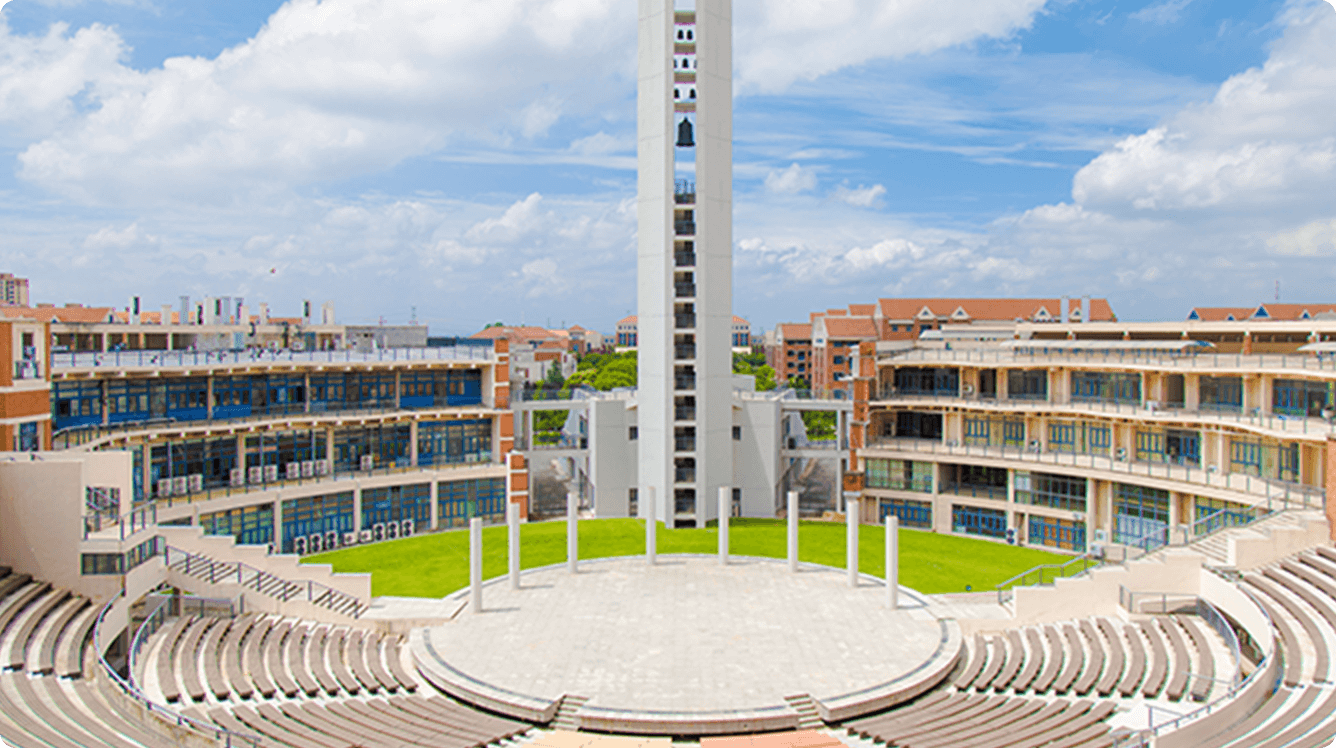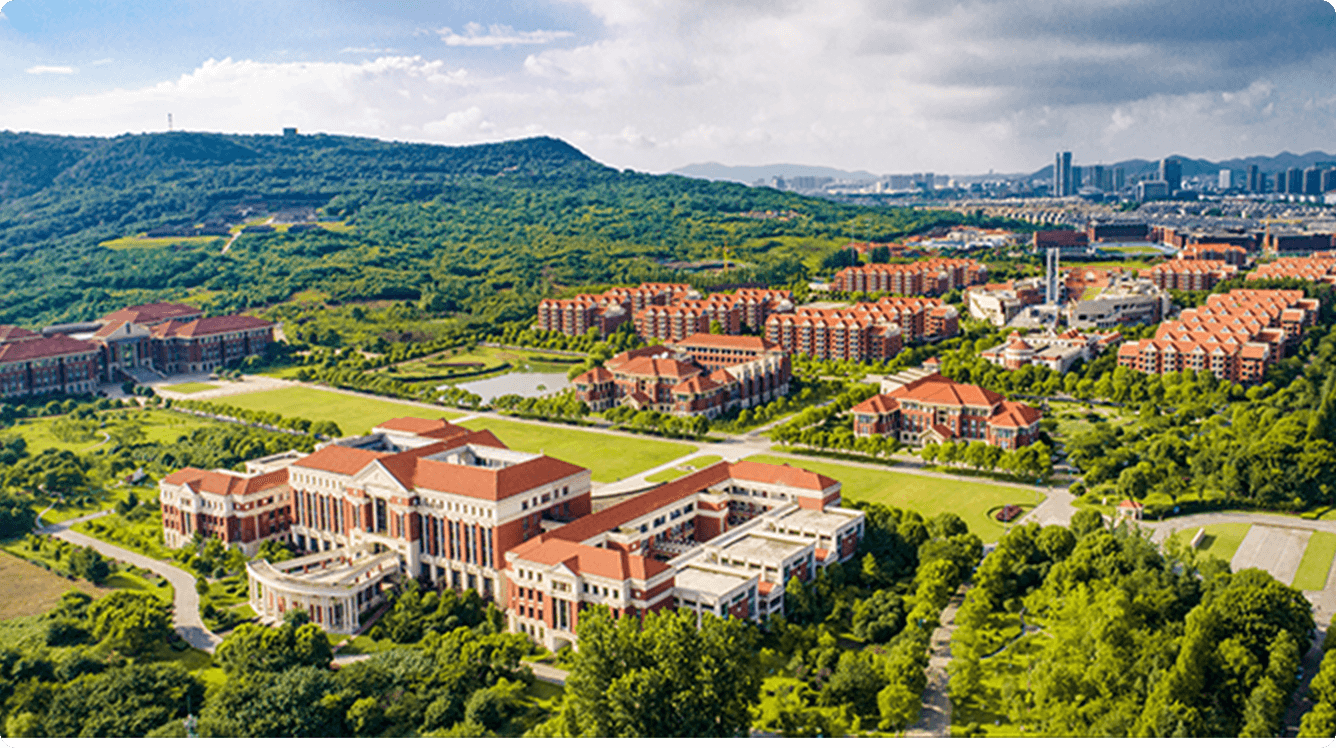Communication University of China Nanjing (formerly Communication University of China Nanguang College, founded in 2004) became an independent public university in 2020, approved by the Ministry of Education. It is a private undergraduate university with distinct features, well-known both domestically and internationally, and enjoys a strong reputation. It is the only application-oriented media university in Jiangsu Province.
As a rising institution that aligns with the era of information and communication and the transformation of the cultural and media industries, the university has undergone nearly two decades of rapid development and has cultivated over 40,000 graduates, earning the title of "The Cradle of Applied Talent in Chinese Media Arts." The university maintains a significant advantage over similar institutions in the province and nationally, with notable strengths in its scale, party-building work, teaching quality, enrollment, employment, industry-education integration, international collaborations, and overall reputation.
Educational Philosophy
The university adheres to the fundamental mission of "cultivating moral character and talent," firmly upholding the banner of socialism with Chinese characteristics. It is committed to public-oriented education, social responsibility, and the socialist direction of schooling. With the goal of becoming a respected, sustainable century-old institution, the university strives to explore the development path of an entrepreneurial, application-oriented university. The school follows the vision of "mass communication, all-media, innovation, and internationalization" and aims to cultivate talent with strong moral foundations, a broad inclusive outlook, practical expertise, and innovative spirit. It emphasizes the development of "moral education first, ability-focused, respect for individuality, and overall development." The university focuses on new and emerging fields such as media convergence, online literature and arts, digital creativity, holographic audiovisuals, e-commerce, and international communication in the context of the new information technology revolution and industry transformation. The goal is to cultivate highly skilled, interdisciplinary, and international creative professionals.
Campus and Facilities
The university is located in Jiangning District, Nanjing, Jiangsu Province, with over 2000 acres of campus across two main campuses: the Fangshan main campus in the National High-tech Industry Park of Jiangning University Town and the Binjiang campus. The main campus is situated near the Fangshan National Geopark and adjacent to the Qinhai Ecological Wetland, offering a scenic and environmentally-friendly setting.
The university features an array of modern, eco-friendly campus facilities, including:
- Over 20,000 square meters of lawn, the largest of its kind in domestic universities
- A 40,000 square meter library, the largest single library in Jiangsu universities
- Grand teaching and training buildings, international exchange buildings, student activity centers modeled after the Colosseum, and an open-air theater
- State-of-the-art facilities for media practice, art exhibitions, and comprehensive educational services, forming a green, modern campus ideal for learning, creative work, and artistic performance.
The university has invested heavily in building a comprehensive teaching and practice infrastructure that includes:
- A media broadcasting studio, experimental theater, dynamic photography studio, aerial photography training base, and a digital recording studio
- Digital animation workstations, post-production studios, and short video creation and live-streaming training platforms
- The first Russian Art Museum at a domestic university, contributing to cultural and artistic education.
Total fixed assets amount to 3 billion yuan.
Academic Programs
The university follows the principle of "strengthening media, improving arts, and promoting interdisciplinary integration." It has established 13 departments, including Broadcasting and Hosting Arts, Radio and Television, Journalism and Communication, International Communication, Photography, Drama and Film, Fine Arts and Design, Animation and Digital Arts, Cultural Management, Media Technology, Esports, Dance, and Music. It also has specialized units such as the Marxist College, General Education Center, Foreign Language Department, International College, Continuing Education College, and a Provincial Key Industry College (Jiangsu Live-streaming E-commerce and Digital Economy College). The university partners with Suzhou University to provide a graduate work station for professional master’s degree education.
The university offers over 50 application-oriented undergraduate programs in fields closely aligned with the media and arts industries. These programs are categorized into five broad areas: Arts, Engineering, Management, Economics, and Culture. The university has earned recognition for its excellence, with 4 national-level first-class undergraduate programs, 16 provincial-level first-class programs, and numerous other accolades in teaching and curriculum quality.
Faculty Strength
The university has implemented a talent-driven strategy to build a diverse and multidisciplinary faculty, focusing on teaching, research, and practical application. It employs over 1,200 full-time faculty members and more than 400 part-time instructors, many of whom are renowned scholars and industry leaders. The faculty includes award-winning professionals such as national cultural figures, recipients of major industry awards, and experts involved in high-profile academic and creative projects. This has resulted in a strong and influential academic team.
Achievements
The university has fostered an active innovation and practice environment, with students and faculty frequently winning top prizes in prestigious competitions such as the Telly International Advertising Festival, Cannes Film Festival Short Films, and the China Drama Golden Lion Award. Students also shine in fields such as animation, broadcasting, and international communication. The university’s employment rate consistently exceeds 98%, with many graduates securing positions in top national and provincial media outlets and the cultural and creative industries. The university’s alumni include famous actors, journalists, directors, and cultural leaders.
Industry-Education Integration
The university has forged strong partnerships with leading companies in the digital economy and media industries, including iQIYI, Huaxia Vision, and Suning. It has set up more than 100 practical training and employment bases with media organizations across the country. The university also hosts various academic and industry forums and cultural events, expanding its influence both within the academic world and across the media industry.
International Collaboration
The university follows a global strategy and has become a prominent platform for international media education. It has formed partnerships with over 80 universities in 12 countries and regions, including the UK’s Teesside University. It has also established the “China-UK Digital Creative Academy” to develop cutting-edge programs in areas like digital animation, media production, and gaming. The university brings in international experts and offers dual-degree programs to enhance students' global perspective and skills.
Social Contribution
The university actively supports regional economic development, particularly in the cultural and creative industries. It works closely with local governments and businesses to foster innovation and integrate education with industry. The university is also involved in professional training and continuing education services to enhance the skills of industry professionals.
Reputation and Vision
In its 18 years of development, the university has established a strong reputation, earning recognition from various third-party rankings and industry assessments. It continues to improve its educational quality and strives to become a leading, internationally recognized university in the fields of media, digital creativity, and cultural arts. As part of its “14th Five-Year Plan,” the university aims to enhance its teaching and research capacities, develop new programs in digital media and communication, and strengthen its position as a model institution for industry-education integration and international collaboration.









